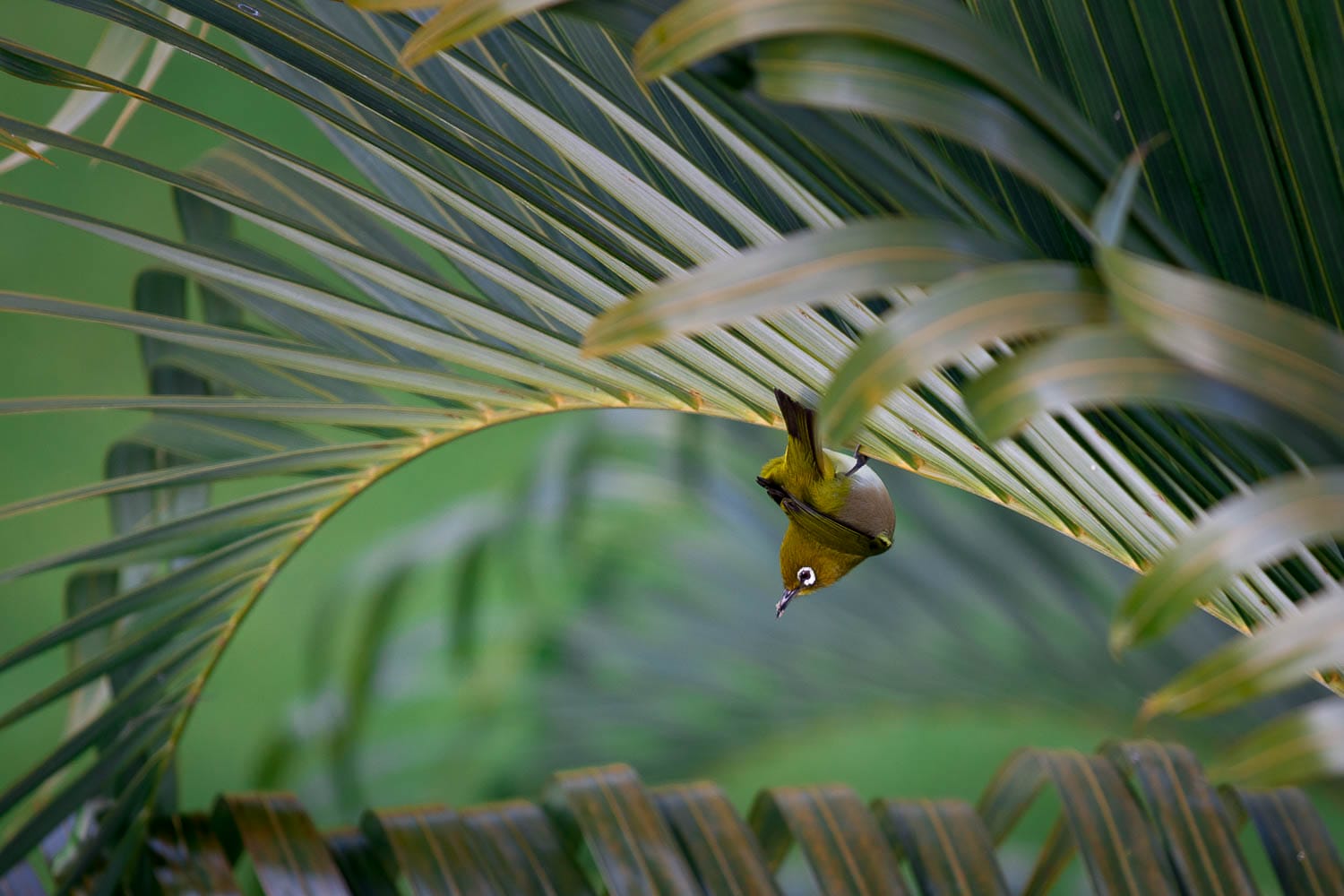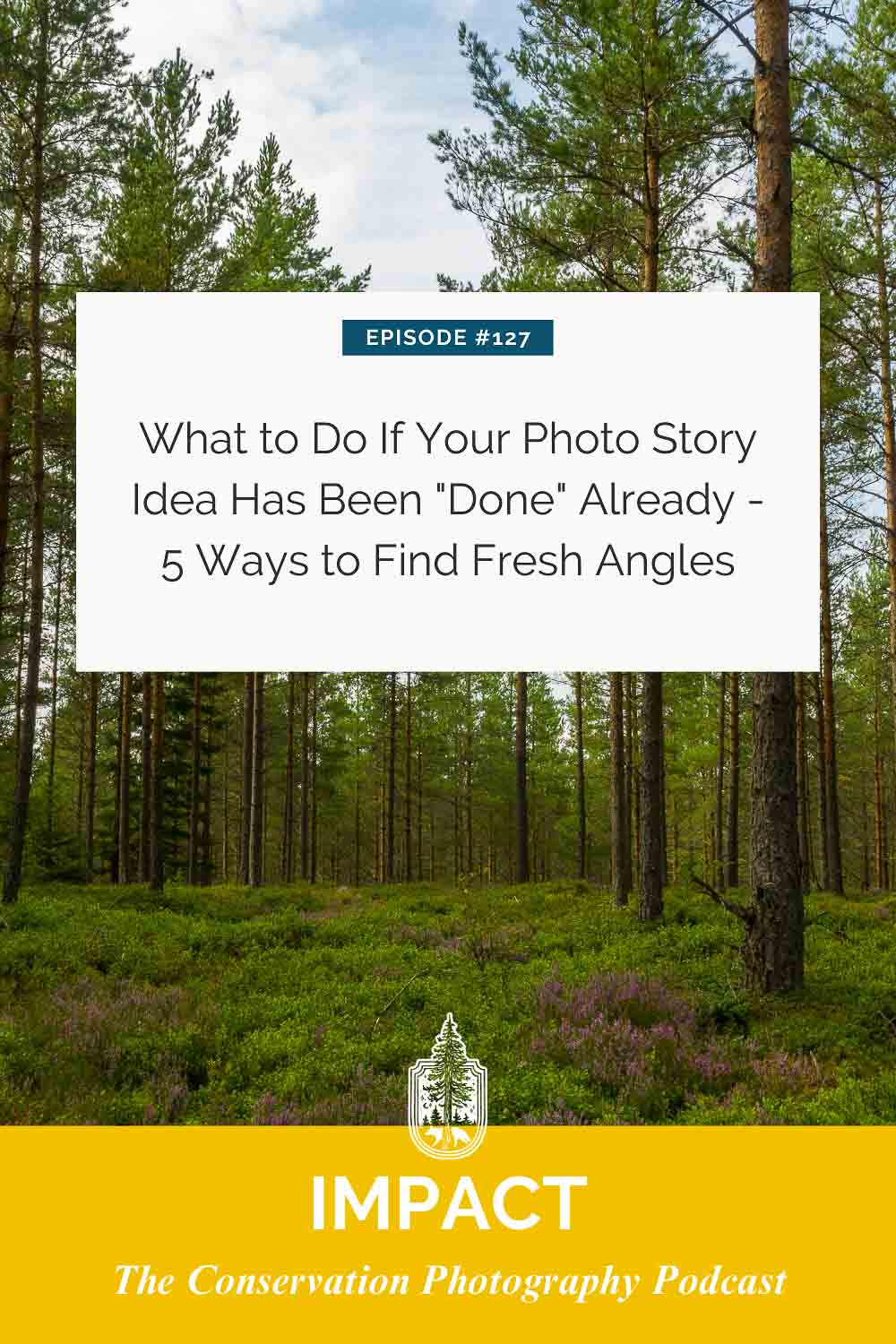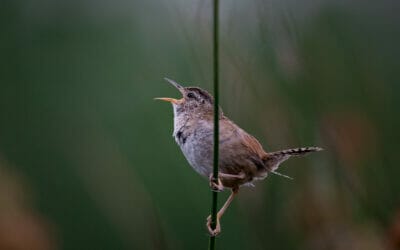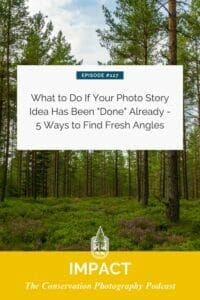Finding out your photo story idea has been done can definitely be disheartening. However, this doesn’t mean that you can’t still do your story; it just means that you will need to find fresh angles with which to approach it. Here are 5 strategies that’ll help you find a new approach, and a new excitement for your photo story idea!
Zero in on new, fun ways of photographing a story
If you’re feeling frustrated and disappointed because the photo story idea that you had has been done by someone else, don’t despair! It doesn’t mean the end for your story.
In fact, as conservation photographers, we have a bigger purpose in life than just creating stories—we want our stories to make an impact and reach as broad an audience as possible. That means telling the same story many times (without repeating what has already been seen).
By taking a “quarter pivot” on the idea, focusing on the purpose behind our conservation photography, and using five strategies to rethink your story, you can keep moving forward confidently.
Just like a fingerprint is unique to each person, even if other people have similar stories, yours can be uniquely yours with a little creativity. You never know what incredibly insightful stories may come out of it.
1. Look for Anything New
First things first, check if there’s anything new happening with your story topic. If your story involves a scientific element, are there new findings or developments? Has there been a new impact due to recent activities?
For example, if your story is about a forest about to be logged, check if there’s been a new protest, legislation, or even the aftermath of the logging. New developments can give your story a fresh angle and make it relevant again.
2. Find a Micro Story
Sometimes, a larger story can be broken down into smaller, more detailed micro stories. These smaller stories can be about specific characters, locations, species, or even particular events within the larger narrative.
For example, if the overall story is about climate change, you could zoom in on how a specific town is adapting to rising sea levels. Micro stories can offer a more nuanced perspective and might be easier to pitch to publications looking for unique angles.
3. Change the Perspective
Consider telling the story from a different perspective. This could mean focusing on a new angle that hasn’t been covered yet.
For instance, if the story is about urban coyotes, instead of discussing how coyotes are adapting to city life, you could focus on the perspective of professional dog walkers who encounter these coyotes regularly. Different perspectives can make the same story feel fresh and interesting.
4. Target a Different Audience
Think about where the original story was published and which audience it reached. Then, consider targeting a different audience. If the story was covered in a regional publication, try pitching it to a national or international audience.
Or, if it was featured in a conservation magazine, you could adapt it for a lifestyle or travel magazine. Tailoring your story to different audiences can open up new opportunities for publication.
5. Use a Different Visual Style
Finally, consider changing the visual style of your photos. If the original story was covered with a photojournalistic approach, you could try a more artistic or intimate style.
For example, if the story is about palm oil and its impact on orangutans, you could photograph it with a focus on macro photography to highlight the smaller, often overlooked details. Different visual styles can make the same story feel new and engaging.
Recap with Examples
Let’s use an example to recap these strategies. Suppose your story is about palm oil and its impact on orangutans:
- Is there anything new? – Check if there’s new research, a new conservation initiative, or a new product that doesn’t use palm oil.
- Find a micro story – Focus on a specific product that uses palm oil, like a popular brand of chocolate spread, and its impact on the market and consumers.
- Change the perspective – Tell the story from the perspective of local workers in palm oil plantations or the communities affected by deforestation.
- Target a different audience – Pitch the story to a humanitarian magazine, highlighting the human impact of palm oil production, or a cosmetics magazine, focusing on palm oil in beauty products.
- Use a different visual style – If the original story used wide-angle shots of deforestation, try using close-up shots of the products and the people involved, or use aerial photography to show the scale of deforestation.
Remember, even if a story has been done, you can always find a fresh angle. By looking for new developments, focusing on micro stories, changing perspectives, targeting different audiences, and using different visual styles, you can keep your photo stories engaging and relevant.











